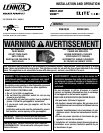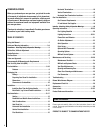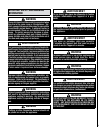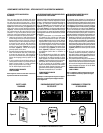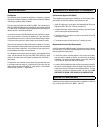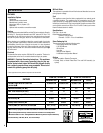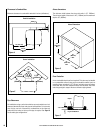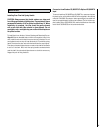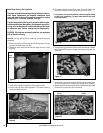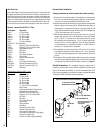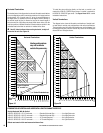
6
• Must conform with all local, state and national installation codes. In
the absence of local codes, the installation must conform with National
Fuel Gas Code ANSI Z223.1 - latest edition, also known as NFPA 54
(In Canada, the current CAN/CSA B149.1 installation code). Refer to
the National Fuel Gas Code and local zoning and code authorities for
details on installation requirements.
• Mobile home installations must conform with the Mobile Home Con-
struction and Safety Standard, Title 24 CFR, Part 3280 (in Canada
CAN/CSA Z240 MH), or, when such a standard is not applicable, the
Standard for Mobile Home Installations, ANSI A225.1 - latest edi-
tion.
• Must be vented directly to the outside in accordance with the latest
edition of the National Fuel Gas Code and must never be attached to
a chimney serving a separate solid fuel burning appliance.
• Has been certified for use with either natural gas or propane.
• Is not for use with solid fuels.
• Is approved for sitting rooms and/or bedrooms.
THE GAS STOVE
ORIFICE SIZE/ALTITUDE ADJUSTMENT
For altitudes above 2,000 feet (In Canada 4,500 FT/1370 M), the orifice
should be de-rated by 4% for every 1,000 feet to maintain the proper ratio
of gas to air. Improper orifice sizing may result in damage and unsafe
conditions. Changing the orifice should only be done by a qualified service
technician. Contact your Lennox Hearth Products dealer for proper orifice
sizes (see Page 26 for more information).
SMOKE DETECTORS
Since there are always several potential sources of fire in any home, we
recommend installing smoke detectors. If possible, install the smoke
detector in a hallway adjacent to the room (to reduce the possibility of
occasional false activation from the heat produced by the appliance). If
your local code requires a smoke detector be installed within the same
room, you must follow the requirements of your local code. Check with
your local building department for requirements in your area.



